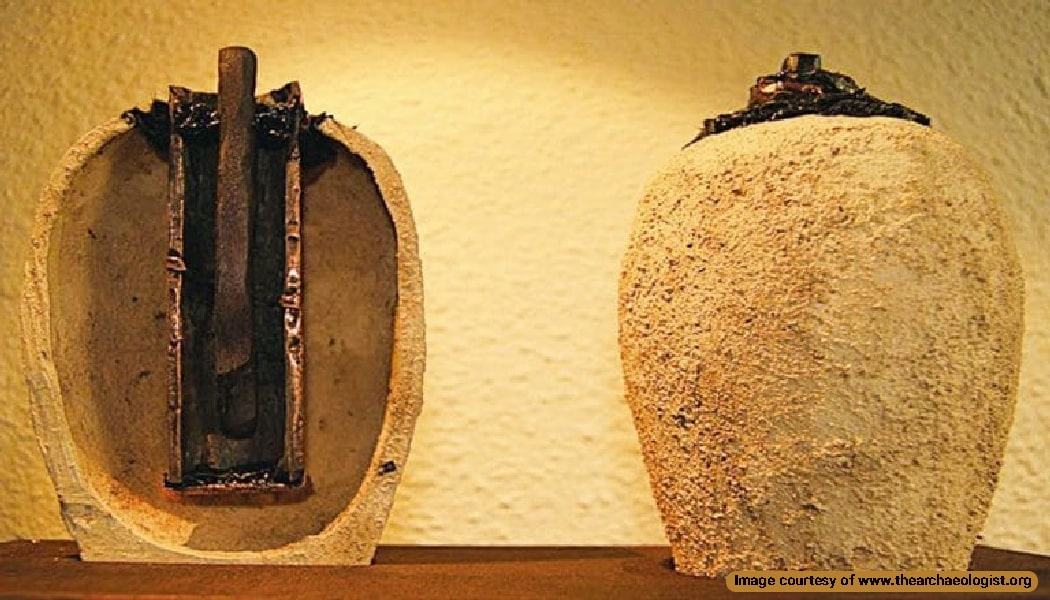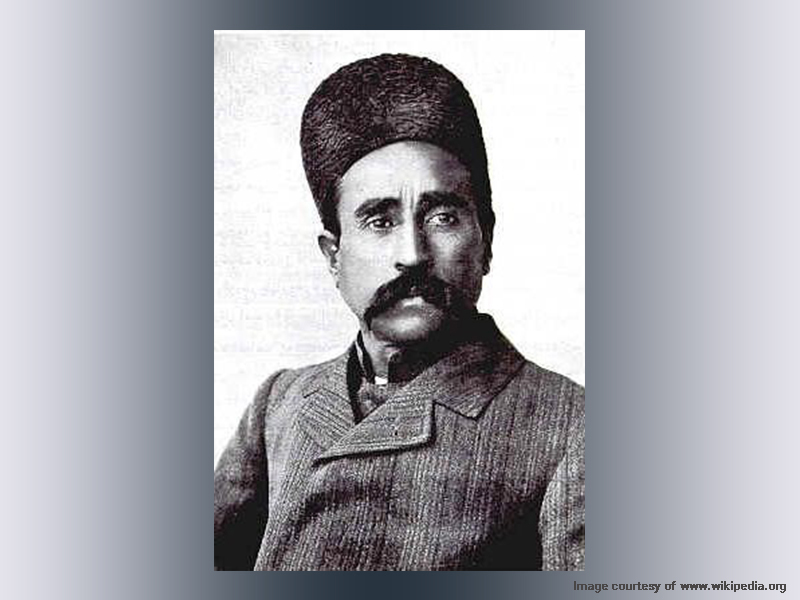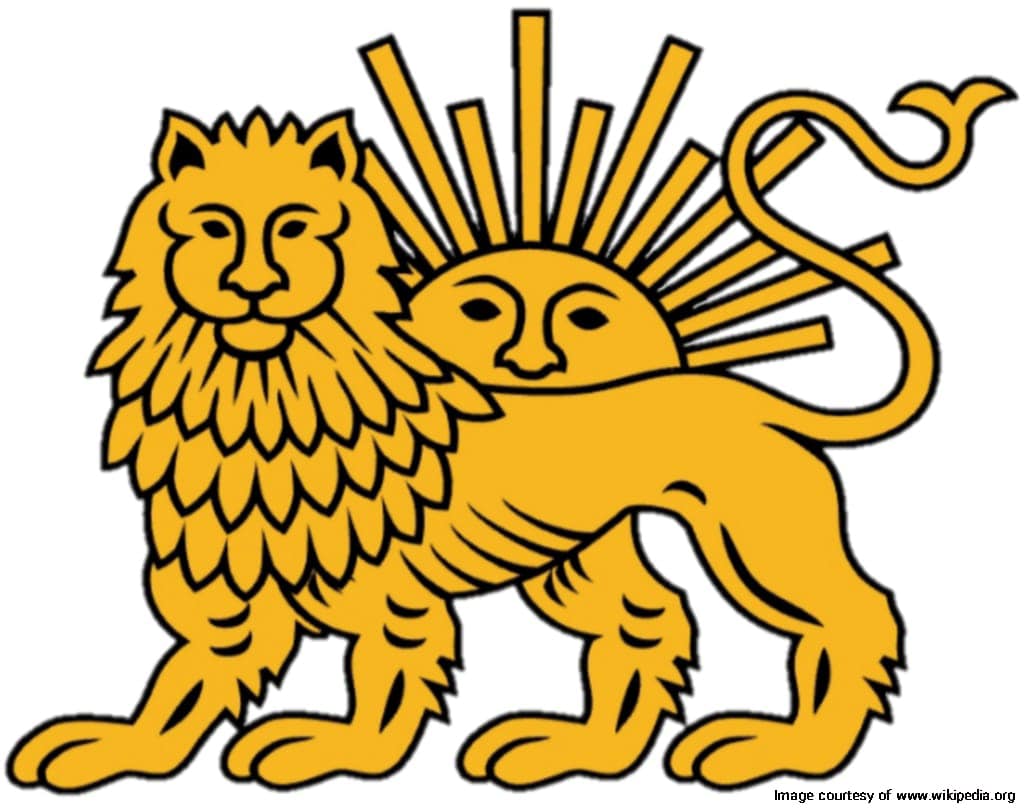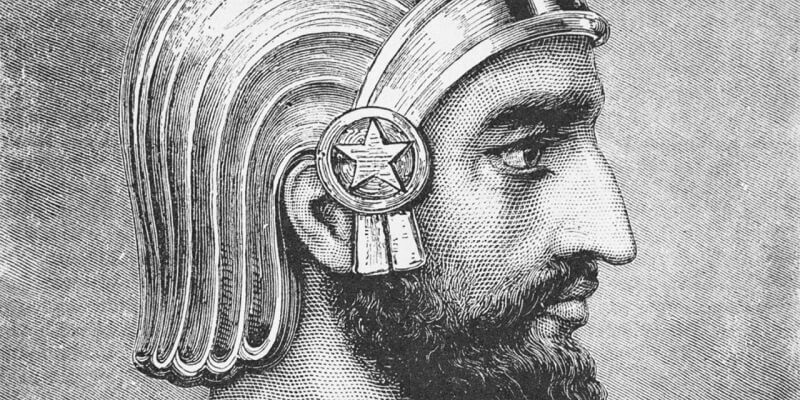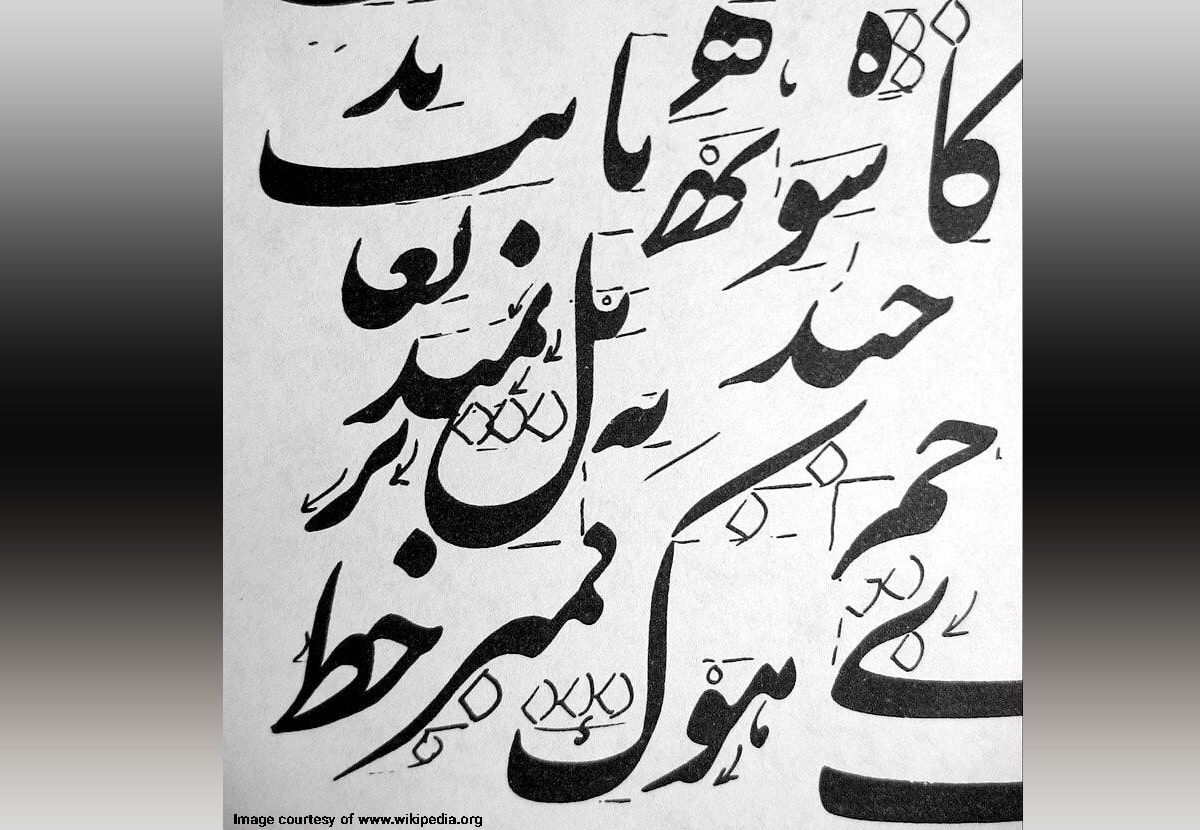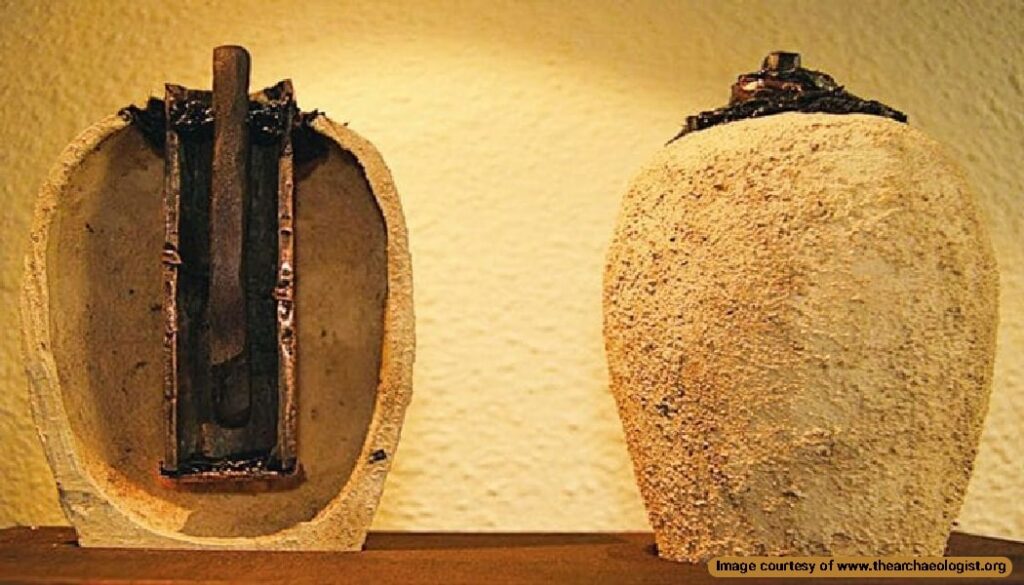
The Parthian Battery, also known as the Baghdad Battery, is an artifact that was discovered in 1936 in present-day Iraq. This historical artifact is a collection of three objects found in Khujut Rabu in the southeast of Baghdad near the ruins of Ctesiphon metropolis, the Parthian, and later Sassanid, Capital. The ancient battery was lost during the looting frenzies caused by the 2003 invasion of Iraq. This artifact was the subject of archeological controversy surrounding the history of Parthians.
The Discovery and Initial Theories
The artifact was allegedly discovered by Wilhelm König during an excavation in Khukut Rabu in 1936. The Austrian archeologist was the assistant of the German leader of the Baghdad Antiquity Administration. Two years later, he published a paper titled “Ein Galvanisches Element aus der Partherzeit?” (A galvanic element from the Parthian period?).
In this paper, he theorized that the artifacts were rudimentary galvanic cells used to electroplate the silver objects discovered in the excavation. Later, it was established that the mentioned objects covered with a thin layer of silver were crafted using a fire-gilding method that utilized mercury.
Another theory suggests that the battery could have been used for medicinal purposes. In ancient times, electricity was believed to have healing properties, and it is possible that the Parthians used the battery to treat various ailments. This theory is supported by the fact that the battery was found near the ruins of Ctesiphon, which was known for its advanced medical practices.
Some researchers have also suggested that the battery could have been used for religious or ceremonial purposes. The fact that the battery was found near the ruins of a major city suggests that it could have been used in religious rituals or ceremonies. This theory is supported by the fact that similar artifacts have been found in other ancient cultures, such as the Egyptians and the Greeks, who used electricity in their religious practices.
Structure and Composition of the Parthian Battery
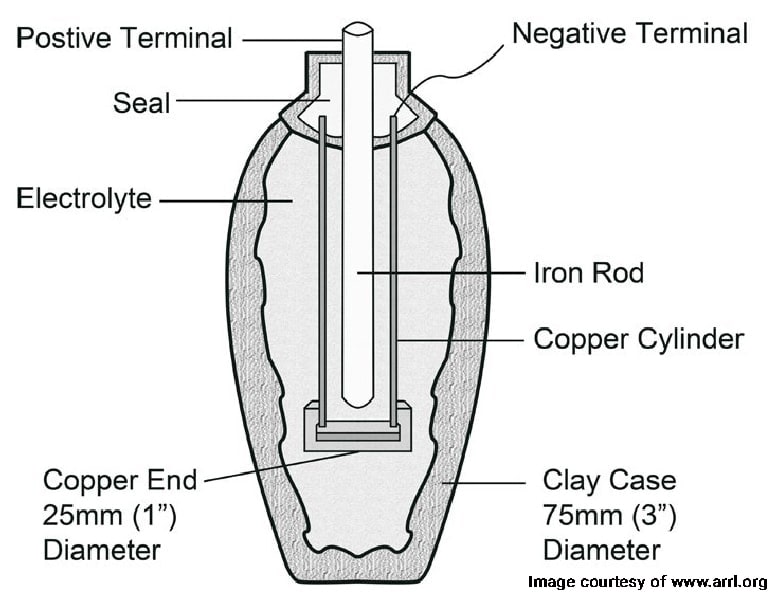
The artifact is composed of three components:
- Terracotta (clay jar) 14 cm tall
- Copper-sheet cylinder
- Iron rod isolated from the copper cylinder by bitumen
The iron rod fits inside the copper cylinder and this larger construct fits inside the terracotta. The metals were corroded indicating that the container was filled with wine or vinegar, which would serve as an electrolyte solution to create an electric current. The cylinder was not watertight, meaning that the liquid would surround the iron rod.
The Cultural and Historical Context
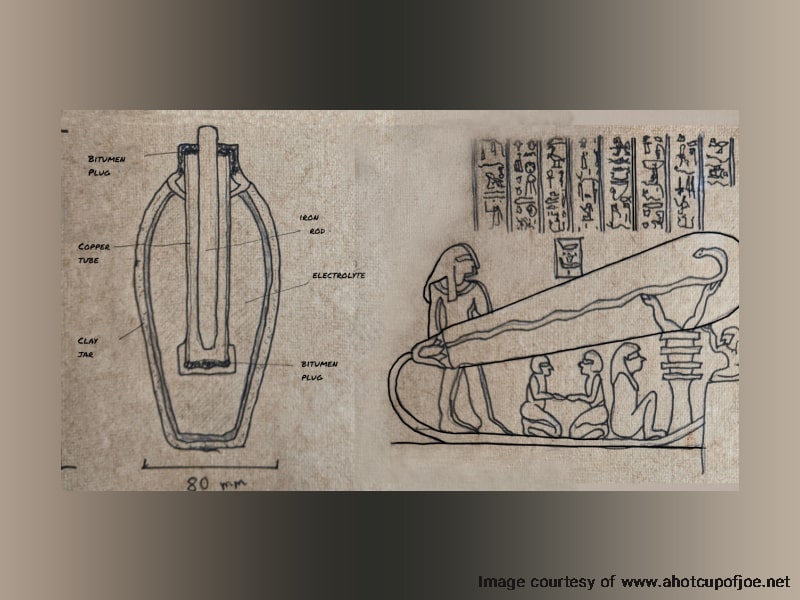
There are doubts about the Parthian origin of the artifact. The design is similar to Sassanid artifacts, and there is an overlap of historical evidence that suggests it could be of Sassanid origin. This is not the first example of ancient battery technology. The hieroglyphic reliefs in the Egyptian Hathor temple depicts an artifact that looks like a battery. The technology may have been borrowed from Egypt or independently discovered in ancient Persia.
However, given the fact that the Parthian Empire was known for its advanced technology and scientific knowledge, this artifact was most likely created in the Parthian era. The Parthians were skilled in various fields, including engineering, medicine, and astronomy. The discovery of the Parthian Battery suggests that they may have also known about electricity and its applications.
The Parthian Empire was a major center of trade and commerce, and it is possible that the battery was used in some form of commercial activity. The fact that the battery was found near the ruins of Ctesiphon, a major trading hub, supports this theory. The Parthians were known for their advanced engineering skills, and it is possible that they used the battery in some form of industrial process.
Lack of Historical Evidence About Parthian Technology
The 7th-century invasion of Persian territories by the Arab army led to the widespread destruction of libraries that may have contained valuable clues about the function and significance of this ancient artifact. This loss of knowledge has made it challenging for modern researchers to fully understand the historical and cultural context surrounding the artifact. The loss of the original artifact during the looting of the Baghdad Museum in 2003 has made it even more challenging to uncover the truth.
Modern Experiments and Replications
Modern scientists have attempted to replicate the Parthian Battery using similar materials. These experiments have shown that the artifact could indeed produce a small amount of electricity when filled with an acidic solution like vinegar or lemon juice. This supports the theory that it could have been used as a primitive battery.
In 2005, the Myth Busters TV program tested hand-made terracottas similar to the Parthian artifact that were able to generate 4 volts of electricity using lemon juice as an electrolyte. When linked, the batteries produced enough power to electroplate a small artifact, thus strengthening the possibility of its theorized use in ancient Persia.
A Mystery Yet to Be Solved
The Parthian Battery is a fascinating artifact that offers a glimpse into the technological and scientific knowledge of the ancient Parthians. Its discovery has sparked numerous theories and debates, and modern experiments have shown that it could indeed produce a small amount of electricity.
Despite numerous theories and experiments, the true purpose of the Parthian Battery remains a mystery. Whether it was an ancient battery, a storage vessel for sacred scrolls, or something entirely different, it continues to fascinate archaeologists and historians alike. Archeologists remain skeptical of the artifact’s intended use. In 2012, Professor Elizabeth Stone of Stony Brook University claimed that she had not met a single archeologist who believed the artifacts were ancient batteries.
Frequently Asked Questions About the Parthian Battery
If you have any other questions about the Parthian Battery, please let us know in the comments. We will respond as soon as possible.
What is the Parthian Battery?
The Parthian Battery, also known as the Baghdad Battery, is an ancient artifact discovered in 1936 near Baghdad, Iraq. It consists of a terracotta pot, a copper cylinder, and an iron rod, and is believed to date back to the Parthian or Sassanid periods.
Who discovered the Parthian Battery?
The artifact was allegedly discovered by Wilhelm König, an Austrian archaeologist, during an excavation in Khujut Rabu in 1936.
How does the Parthian Battery work?
When filled with an acidic solution like vinegar or lemon juice, the Parthian Battery can produce a small amount of electricity. The acidic solution acts as an electrolyte, facilitating an electrochemical reaction between the copper and iron, generating an electric current.
What were the possible uses of the Parthian Battery?
There are several theories about the possible uses of the Parthian Battery:
Electroplating: It might have been used to coat objects with a thin layer of metal.
Medical purposes: It could have been used for therapeutic purposes, similar to acupuncture.
Religious or ceremonial purposes: It might have been used in rituals or to store sacred scrolls.
Is there any historical evidence supporting the use of the Parthian Battery?
There is no definitive historical evidence supporting the exact use of the Parthian Battery. Theories about its use are based on modern experiments and interpretations of the artifact’s structure and composition.
What happened to the original Parthian Battery?
The original Parthian Battery was lost during the looting of the Baghdad Museum in 2003, following the invasion of Iraq. This has made it challenging for researchers to study the artifact further.






